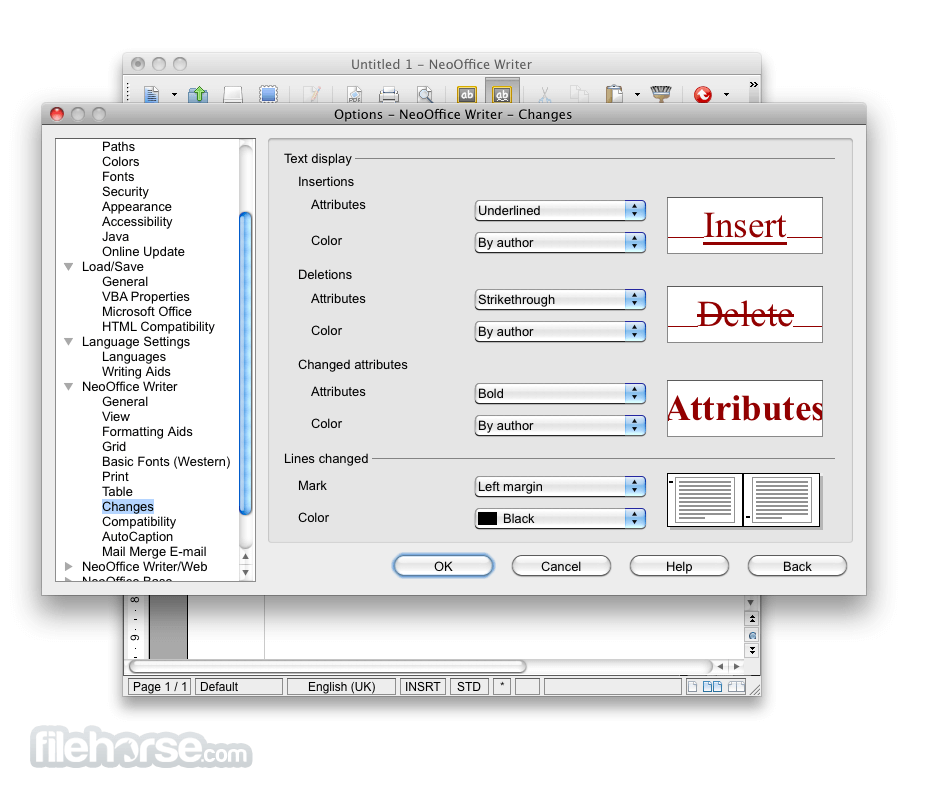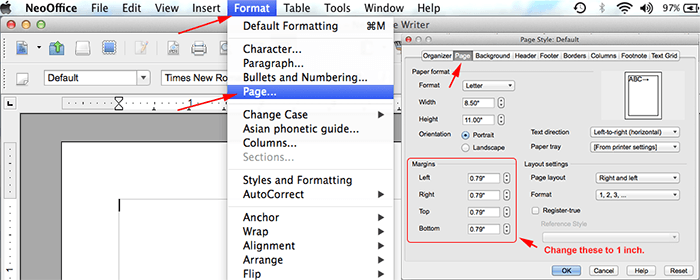

If you have any questions or want to improve any of the above methods, feel free to drop me a comment. You can test the above regular expression on this link. String html = inputString.ConvertToLineBreaks()
Neooffice change new paragraph to new line code#
Include the method in a separate file, then include it in your code through a using statement then call the method as follows: The above method is designed to be an extension method. Public static string ConvertToLineBreaks(this string inputString) To convert a string's new lines to HTML line breaks you can use the following method that leverages regular expressions. In some cases, you will need to convert an existing string that contains new lines to a valid HTML code that includes tags. Inserting New Lines in ASP.NET for an Existing StringLine breaks in HTML or ASP.NET is represented by the tag. For more information, see Difference between \r and \r\n. \n represents a new line, while \r represents a carriage return, which means the cursor will be moved to the very far left position. But what's the difference between \r\n and \n? The above code will successfully insert a new line using \r\n. For example:Ĭonsole.WriteLine("This is a line.

Using \r\n to Insert a New LineYou can also inject \r\n in a string to insert a new line. This new line ASCII literal \x0A will also insert a new line in the string above. For example:Ĭonsole.WriteLine("This is a line. Using OpenOffices Find & Replace feature, you can enter specific symbols to replace line breaks with new elements or to simply remove them altogether. But instead, you can use the ASCII literal that represents a new line. Using the ASCII Literal of a New LineThis method is similar to the \n. The above code will produce the same result as the previous screenshot. For example:Ĭonsole.WriteLine("This is a line." + Environment.NewLine + "This is another line.") For example:Ĭonsole.WriteLine("This is a line") Console.WriteLine() Console.WriteLine("This is another line") Console.WriteLine("This is a line") Console.WriteLine() Console.WriteLine("This is another line") Īs mentioned in Microsoft's Documentation, running a Console.WriteLine() without any parameters translates to a line terminator, as shown in the next screenshot.Īs clearly noticed, that \n could successfully insert a new line inside the same string.Īnother way to add a new line in a string is using Environment.NewLine. This is the same as pressing the Tab key. This one-and the rest-are mainly for use in short stories. Every time you go on to a new topic, you should make a new paragraph. Tab or Tab key: Enter a wide space, usually to align text. When you skip to a new place When a new person begins to speak When you want to produce a dramatic effect Let's look at them one at a time. Dragon automatically capitalizes the next word you speak. New paragraph: Start a new paragraph, including space to offset it from the previous one. Using Parameter-less Console.WriteLine() to Add a New LineThe easiest way to inject a new line in a console application is to use a parameter-less Console.WriteLine(). This is the same as pressing the Enter key once. Inserting new lines in ASP.NET for an existing string.Injecting new lines within the same string. Word, Excel, and PowerPoint in one app View, edit, and share files without the need to switch between multiple apps.Using parameter-less Console.WriteLine() to add a new line.The 6 ways to insert new lines in C# are as follows: In this post, we will discuss 6 different ways to insert a new line in C# and test our code on a console application, and we will emphasize the relationship between one or more of these ways with what we discussed earlier about CLR. Net, when you write some code and try to build it, the Just-in-Time JIT compilation compiles your code and transforms it to machine instructions, which then will be executed by Common Language Runtime CLR.įor more information about CLR, see Common Language Runtime. A managed programming language interprets or builds your code and transforms it into another executable format to be executed on your operating system.įor example, in. Would appreciate any help.Dot Net C# is one of the greatest managed programming languages. Trying to figure out to replace all new lines with paragraphs. The problem is that sometimes the text contains a paragraph and sometimes just a new line. P.Range.Style = ActiveDocument.Styles("Heading 1") ' Determine current size of the paragraph 'Iterate through the text and print each paragraph Wrote the following Macro: Sub styles_temp() The other text will remain to have style "Normal".

The next paragraph will be Heading 2, and the next after it - Heading 3.

If the font size of a paragraph is 19.5, the paragraph must get style Heading 1. I need to go through a Word document and change certain paragraphs based on their parameters. I need to do the following in a Word Macro.


 0 kommentar(er)
0 kommentar(er)
